SITRANET Overview
SITRANET is devoted to develop a new generation of training equipment, based on simulation and virtual reality, designed to support logistics companies. Not only will this project create simulators for crane operators and truck drivers, it will also reduce training costs while improving safety and efficiency.
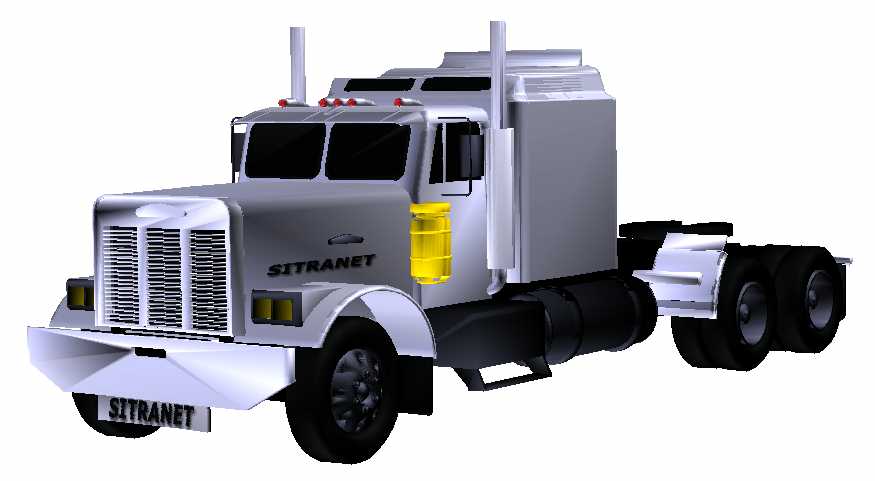
INTRODUCTION
The SI.TRA.NE.T. (Simulation Training-Networking for Equal opportunities in Transport) project, utilizing the authors' extensive training experience on simulation systems, sets up a training system that enhances prevention in high-risk activities, such as handling particularly heavy loads using hoisting equipment (such as container cranes). It also makes it easier for those people who would find it difficult to gain access to or be retrained in the specific work areas to enter the profession.
Ideally, using this type of tool, based on such innovative technologies, would drastically lower costs, allowing it to be significantly extended throughout the sector.
It should be noted that, at the present time, for what concerns gantry crane simulators, very few systems are operational (1 in Genoa, Italy, out of 2 available in the country, 1 in Le Havre, France, 2-3 in Holland, etc.) given that it costs around one million dollars and more than 100,000 for maintenance. Obviously, this greatly restricts the potential user market.
In similar applications, such as truck crane activities, the problem resurfaces in a very analogous manner and the ratio between system cost (purchase and management) and operator financial capacities limits the widespread use of the simulator in this sector. The situation involving Truck simulators is quite emblematic: despite the significant savings in Switzerland resulting from the testing and adoption of army truck driver training simulators, these tools are almost non-existent on the private market and, in any case, economically and financially prohibitive for users.
Obviously, on the other hand, using this type of tool will reduce training costs (fundamental costs in all those situations where service efficiency must be guaranteed). There is also an obvious impact on safety as well as on the productivity of real plants that is drastically reduced when used for training.
Therefore, it was also considered possible to utilize a phenomenon similar to the one tested in the Nineties on military simulators in these civil applications as well: to downsize simulators and reduce costs, eventually to the detriment of the level of realism/fidelity, so as to integrate them into the training process (along with full-scope simulators), while increasing their availability for testing new functions (interaction between machines through distributed simulation).
This approach can be used to reduce implementation of full-scope simulators, to test new cooperative training methods (i.e. two cranes that lift a load together) and to effectively distribute such an approach to all potentially interested companies.
Obviously, this does not imply that training on real machines/vehicles or the old full-scope simulators should be abandoned (that on the contrary are utilized even more in the SITRANET project) but rather to create a more flexible and efficient highly integrated training structure.
For the new generation of PC-based simulation products (the so-called downsizing effect), a rather broad international market as well as a fair sized domestic market can be envisaged in which to apply the new HLA architectures in operative fields and in the Defense sector. The hardware implementation standards will be operationally flexible with regard to interface systems in order to ensure maximum possible distribution of such integrations.
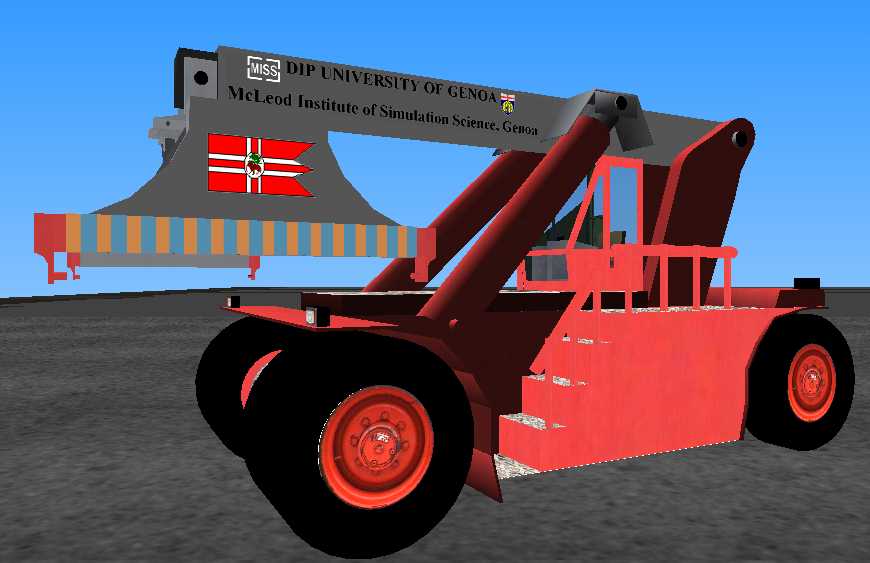
SITRANET INITIAL PHASES
Cooperative efforts will be established with some of the sector's top centers for the purpose of developing three innovative simulators within the first twelve months of the project.
An initial phase of the project, which has already been implemented, focuses on containerization of the Digitran A.C.S.TM (Advanced Crane Simulator) simulation tool. This crane simulator, that costs about one million Euros, simulates the work conditions on board a gantry crane. Up to now, it has been managed from a centralized location by Voltri Terminal Europe of Genoa. However, the relative containerization will be used, through the simulation, no longer to train just the Voltri Genoa Terminal operators: by shifting the simulator from one training center to another, it will be possible to train a broader population of operators throughout Italy.
This tool will also be used to implement other types of simulated vehicles/machines that have yet to be introduced.
This represents only the first step of the SITRANET project: its main and innovative core consists in the development of new generation PC-based simulators that utilize modern synthetic environments and can interact with the operator through special interfaces and between themselves through special architectures (i.e. HLA - High Level Architecture).
THE NEW SITRANET SIMULATORS
The innovative developments of the new SITRANET simulators are based on the construction of a simulator that is downsized compared to the products currently being used and marketed. This makes it possible to construct training supports at a much lower cost, to the detriment of the level of realism of the interfaces supplied (i.e. no-motion), but that however can include complete interactions between different subjects during training.
These simulators are designed to act as educational support tools, to apply and verify during the project, that will then become part of the ongoing training course decentralized into particularly important areas for the transport world, such as in intermodality centers (points where the load changes carrier) such as interports, ports, District parks, etc.
The developments of such new training tools are essentially based on simulation systems for the following types of machinery: front handling systems, such as Reach Stackers, with side vision, that will be applicable on a large target population in port companies and vertical crane handling systems for road haulage and driving for trucks, also with side vision, applicable on a significant population in the foreseen interport area companies.
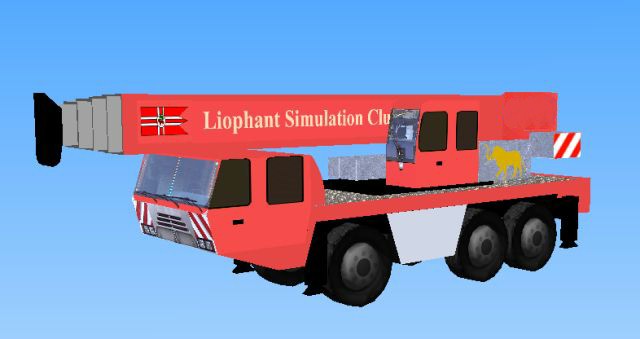
TRAINING PROCEDURES
The project will include a learning progress remote monitoring environment to support the previously described simulation systems and perhaps to become an open base for the continuous remote training of the personnel in the project's participating companies. In the future, any interested companies outside the relative partnership can test an extension of the basic training on the new communication technologies based on an open "portal" concept for logistics.
Since the scope of the project is to establish a training remote progress monitoring standard using Remote Training tools, a subproject, called Portaltra, will generate a reference platform that, through the Internet, will provide "Remote Tutoring", and learning courses in particular on the above-mentioned simulation systems. Above all, it will be used to create an open environment where the cultural development of "remote training" participants is the focal point for preparing individuals and developing company business.
Subsequently, this platform can be used to manage total or partial self-learning courses depending on needs consolidated from the high-detail analyses that will be carried out with companies. However, in particular, the project will include implementation of sessions on this platform concerning the use of new communication technologies, characterizing them with an exemplar description of the company in "virtual reality" (Nettra) and sessions about specific sector standards regarding safety L. 626 (Sictra).
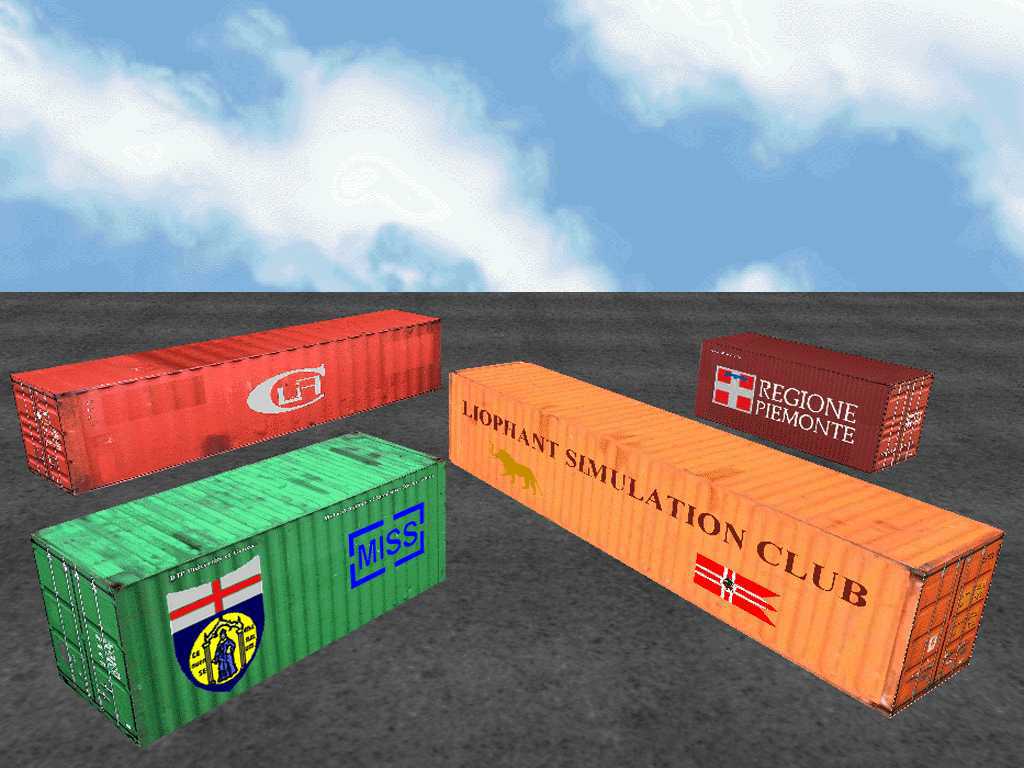
SITRANET PLATFORMS
The tools used to create SITRANET models were selected to generate high performances: for what concerns the modeling software, the authors chose the MultiGen Paradigm/MultiGen CreatorTM tool, one of the most efficient sets of 3D real-time modeling tools that also includes validation, inspection, and data review tools.
In fact, the authors have already acquired experience in this sector and will utilize various specially developed libraries to define the dynamics of the objects. This involves primitives that can be used to operate efficiently with real-time graphics and even on low-level machines through graphic, as well as local and dynamic distancing. The VEGA environment was used to create 3D simulations since, with this scaleable product, the integration level necessary for the development being analyzed can be included in the simulations.
The models will operate on hardware platforms that each consist of 3 personal computers with enhanced computational and graphic performances, equipped with input/output devices, such as:
- 3, 17" liquid crystal TFT monitors per workstation (to guarantee three-sided vision)
- Joystick, steering wheel and pedals
- Subwoofers and speakers with surround effect (i.e. to simulate Doppler effects)
- HMD helmet to immerse the trainee in the virtual environment.
As the last step, using High-Level Architecture integration (DMSO Standard, USA Department of Defense), the various simulators will be allowed to interact according to established rules.
SITRANET's objective is to develop a series of training tools to minimize the training period on real vehicles/machines and to extend the number and types being simulated with respect to the ACS already operating at VTE, with much lower costs compared to the latter tool.
Integration with a support portal for remote training will also guarantee diffusion within the project partnership and later to any other interested parties.
CURRENT STATE OF PROGRESS
Presently, the models of the vehicle driving dynamics were completed to create a common base for three simulators. The graphic objects that should represent the truck were developed at the same time. In fact, the first phase calls for the construction of this simulator even if the development continues in parallel according to the structure reported in the planning scheme.
The truck cab model was completed at the beginning of fall 2002. This was followed by the construction of the interaction dynamics with the trailer cab. From this point the personalization of the simulators continues in parallel.
A parallel procedure is also used to create the cockpit and the integration with the engine and vehicle dynamic models.
The idea of using a common core for vehicle dynamics guarantees the robustness of the models and the possibility of respecting the defined schedule. Obviously, this development method is based to a great extent on the extensive experience of the authors' work groups in constructing this type of simulator during the pre-existing projects. The previous libraries obviously provide considerable support to be able to guarantee such development efficiency.
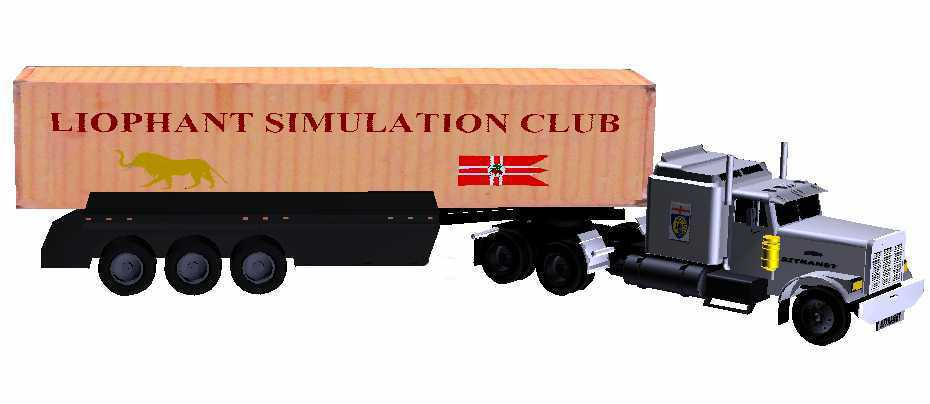
CONCLUSIONS
This project is an excellent example of how consolidated experience in the simulation sector can be used today to meet important challenges, leading to innovative developments with reasonable times and costs. This highlights the possibility of being actively involved in new initiatives and business areas in the simulation sector and guarantees its increasingly greater diffusion in new fields of application.
The results achieved to the present demonstrate that modern distribution simulation architectures can provide new functions for studying complex phenomena that, to the present, were managed exclusively based on the experience of experts. Thanks to close cooperation, also outlined in SITRANET, between users and modelers, these experiences can be transfered to quantitative supports, thus guaranteeing the fidelity of the models, their efficiency and their effective operative use that will reduce costs, improve quality and productivity and, therefore, provide an important competitive edge.




